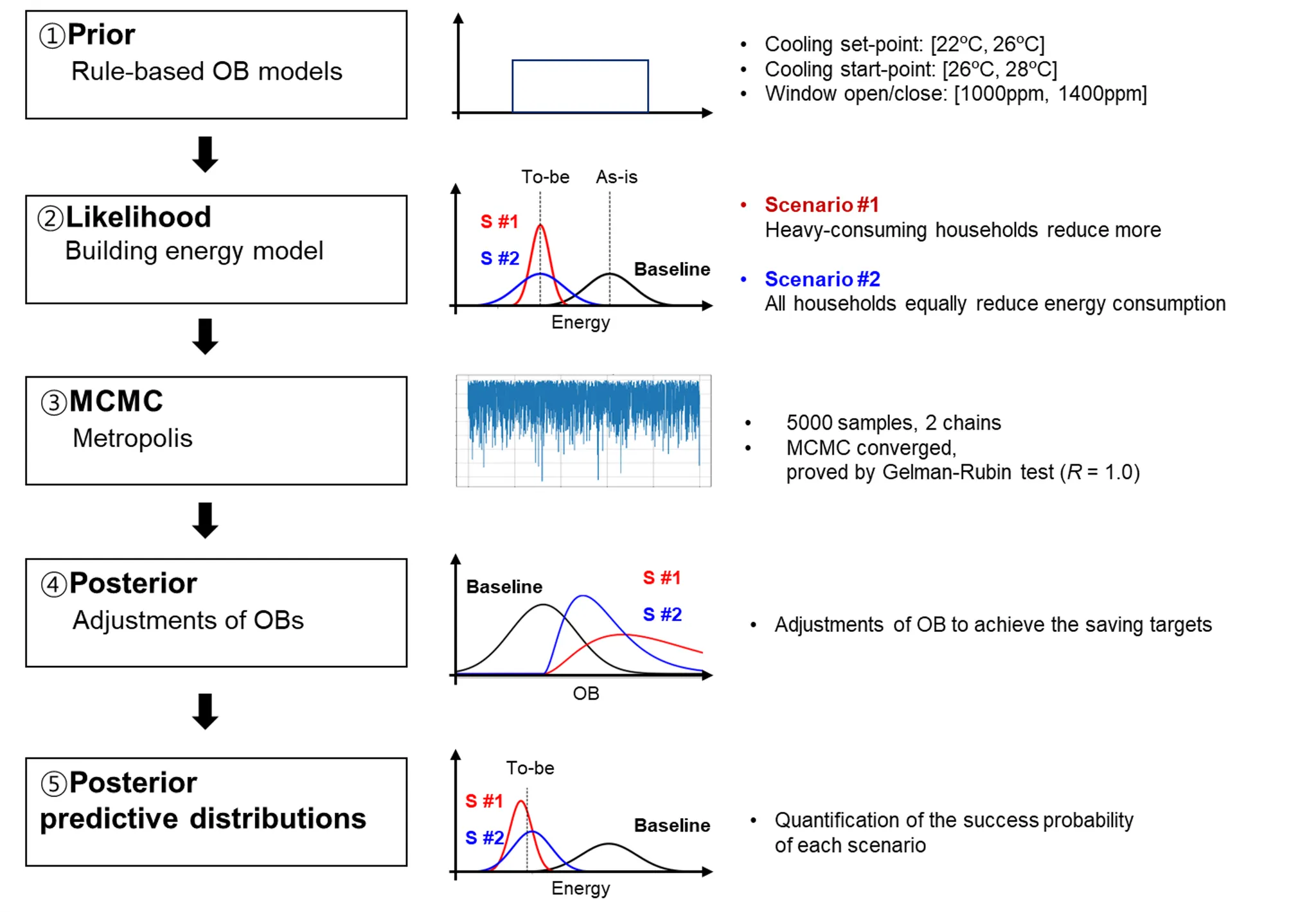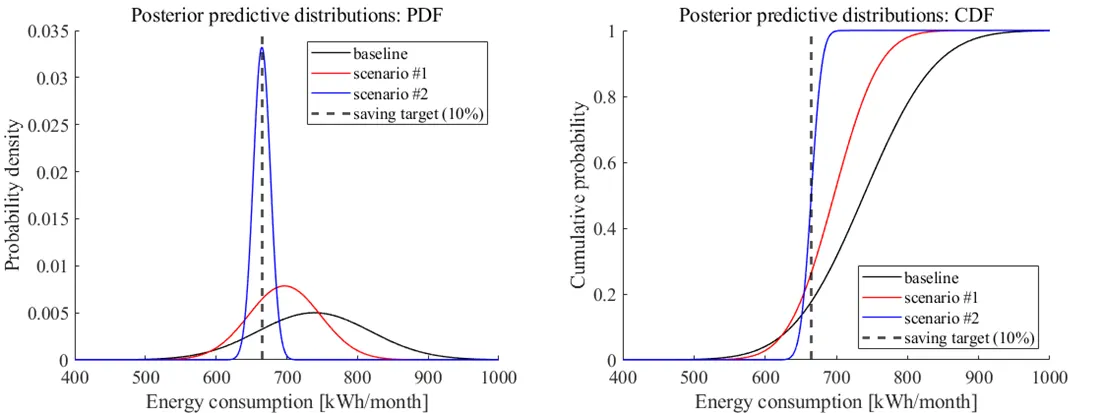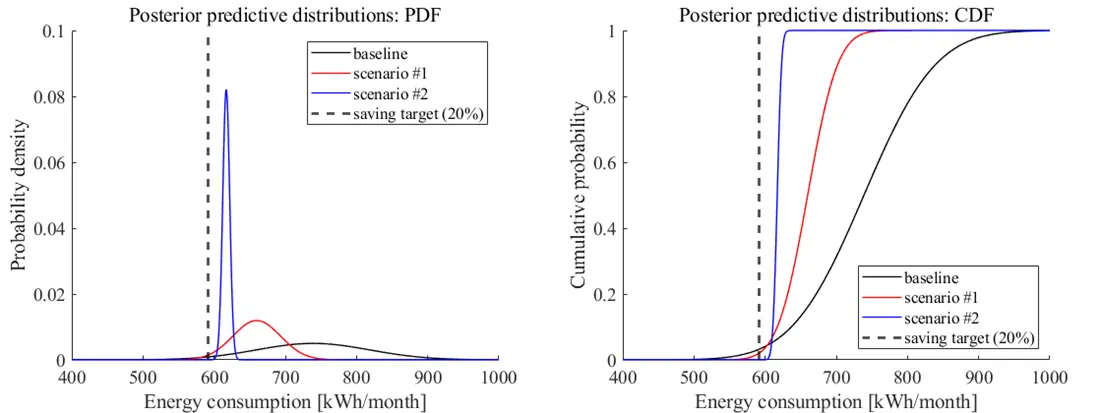•
Introduction
◦
The aim of this project is to propose a methodology for probabilistically exploring scenarios that achieve a energy-saving target in buildings.
◦
As a case study, the proposed methodology was applied to investigate how three occupant behaviors (Cooing set point temperature [℃], Cooling start temperature [℃], and CO2 concentration [PPM] when opening/closing windows) should be modified based on two different scenarios to achieve the target of 10% or 20% energy savings in a residential building located in Seoul, South Korea.
▪
Scenario #1: Heavy-consuming households save more than light-consuming households proportionally to achieve 10% or 20% of the mean energy saving.
▪
Scenario #2: All households in the residential building equally reduce energy consumption by 10% or 20%.
•
Method
◦
Target building: 87 households in a residential building located in Seoul, South Korea
(a) View from North (b) View from West (c) Floor plan (55 m2) of households
◦
Building energy modeling using EnergyPlus
▪
Simulation inputs
◦
Occupant behavior modeling (rule-based)
▪
It is assumed that each agent (i.e., occupant) in a household follows the rules defined in this study
◦
Occupancy schedule collected by the field survey
Occupancy schedule of a household out of 87 households
◦
Surrogate modeling using Artificial Neural Networks (ANN) to reduce computation time
•
Result
◦
The likelihood distribution: baseline (black) vs. scenario #1 (red) vs. scenario #2 (blue)
◦
The posterior distribution of each occupant behavior
▪
10% saving target
•
The result shows that the 10% savings target could be achieved by adjusting cooling set point temperatures alone to a higher level, as indicated by the posterior distributions.
•
The posterior distributions of the other two occupant behaviors (cooling start point temperature and window open/close) are multimodal. This might be because these behaviors are relatively insensitive and/or correlated to the other involved behaviors, making it difficult to identify an adjusting direction.
▪
20% saving target
•
The result shows that the 20% savings target could be achieved by adjusting cooling set point temperatures for Scenario #1 and adjusting all three occupant behaviors for Scenario #2, as indicated by the posterior distributions.
◦
The posterior predictive distributions
▪
Based on the posterior predictive distributions, the success probability of each scenario and each target can be quantified.
▪
10% saving target
▪
20% saving target
◦
Conclusion
▪
Bayesian inference can support decision-making regarding energy policy in a city with appropriate risk management.
▪
The posterior of three occupant behavior measures were estimated, given the observations of the two different scenarios of two energy saving targets (10% and 20%).
▪
If an estimation parameter is correlated to the others, it could be difficult to make a decision (in this study, whether open window more often or not). We should be careful when selecting estimation parameters to obtain an accurate result.
▪
In this study, the priors are assumed to be uniformly distributed (my belief), and this affected the posteriors. Define an actual prior (e.g. domain knowledge, or data) may be important to improve the reliability of the posteriors.






.png&blockId=ed15b826-f68e-4bdb-96af-50220248dc21)







